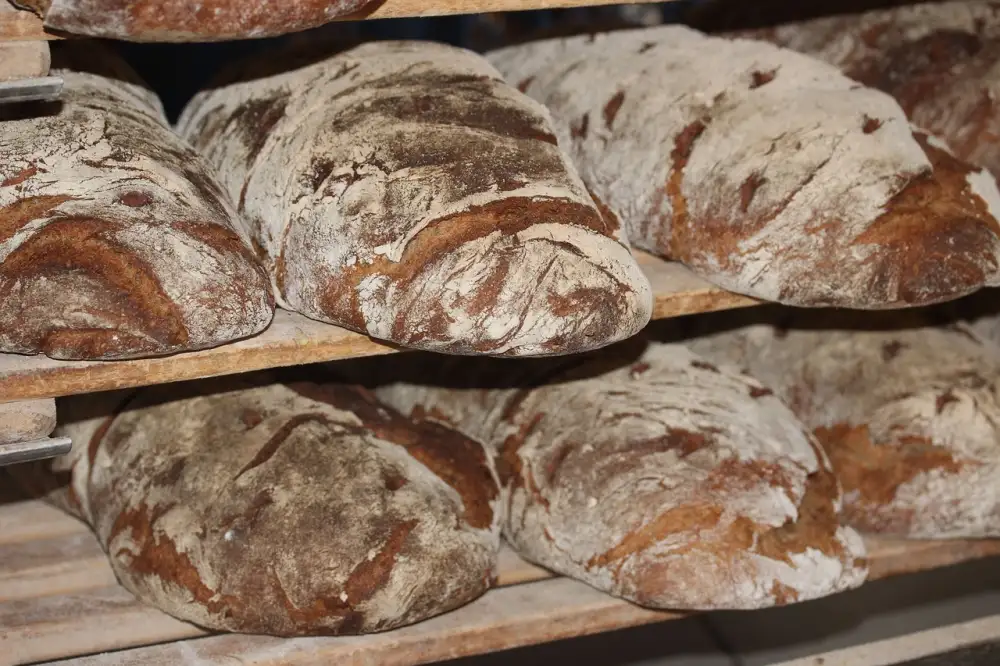Unlock the Magic of Active Dry Yeast: Elevate Your Baking Game with These Essential Tips and Recipes!

Active dry yeast is a key ingredient in baking that plays a crucial role in the leavening process, helping dough rise and creating light, airy textures in baked goods. It is a form of yeast that has been dried and granulated for extended shelf life and convenience. This type of yeast is commonly used in bread making, pizza dough, and other baked treats. Understanding how to properly use active dry yeast can elevate your baking game and help you achieve delicious results every time. Let's delve deeper into the world of active dry yeast and unlock its magic in your kitchen!
What is Active Dry Yeast?
Active dry yeast is a type of yeast commonly used in baking to leaven bread and other baked goods. It is made from the same strain of yeast as instant yeast, but it is dried and ground into smaller particles, making it slower to activate. Active dry yeast needs to be dissolved in warm water before being added to the rest of the ingredients in a recipe. This process helps activate the yeast and allows it to start fermenting, producing carbon dioxide gas which causes dough to rise. Active dry yeast has a longer shelf life compared to fresh yeast and can be stored at room temperature until opened.
How to Use Active Dry Yeast in Baking
1. Activate the yeast: Dissolve the active dry yeast in warm water (around 110°F/43°C) with a pinch of sugar to feed the yeast. Let it sit for about 5-10 minutes until it becomes frothy and bubbly.
2. Mix with other ingredients: Once activated, mix the yeast mixture with your flour and other ingredients in your recipe. Knead the dough thoroughly to ensure even distribution of the yeast.
3. Proofing: After kneading, let the dough rise in a warm, draft-free place until it doubles in size. This process allows the yeast to ferment and create air pockets that give bread its light texture.
4. Baking: Once the dough has risen, bake it at the appropriate temperature according to your recipe. The heat will kill off the yeast, stopping further fermentation and giving your baked goods their final structure and flavor.
By following these steps, you can effectively use active dry yeast to achieve delicious and perfectly risen baked goods every time.
Benefits of Using Active Dry Yeast
Active dry yeast offers several benefits that make it a popular choice for baking. One key advantage is its long shelf life, as it can be stored at room temperature for up to a year. This makes it convenient to have on hand for impromptu baking sessions. Additionally, active dry yeast provides consistent results in terms of rising and fermentation, leading to light and airy baked goods. It also enhances the flavor profile of bread and other baked treats, giving them a rich and complex taste that is hard to achieve with other leavening agents. Overall, active dry yeast is a reliable and versatile ingredient that can elevate your baking game to new heights.
Tips for Working with Active Dry Yeast
1. Proof the yeast: Before using active dry yeast in a recipe, it's crucial to proof it first. Dissolve the yeast in warm water (around 110°F) with a pinch of sugar and let it sit for about 5-10 minutes until it becomes frothy. This ensures that the yeast is alive and active, which is essential for successful baking.
2. Use fresh yeast: Check the expiration date on your active dry yeast package before using it. Using expired yeast can result in failed recipes as the yeast may no longer be viable.
3. Store properly: To maintain the potency of your active dry yeast, store it in an airtight container in a cool, dry place such as the refrigerator or freezer. Moisture and heat can reduce its effectiveness.
4. Avoid direct contact with salt: Salt can inhibit the growth of yeast, so when mixing ingredients, keep salt separate from the yeast until you're ready to combine them.
5. Adjust rising times: If your dough isn't rising as expected, consider adjusting the rising time based on factors like room temperature and humidity. A longer rise may be needed in cooler environments.
By following these tips, you can ensure that your active dry yeast works effectively in your baking endeavors, resulting in delicious and perfectly risen breads, pastries, and more.
Common Mistakes to Avoid When Using Active Dry Yeast
1. Not Proofing the Yeast: It's crucial to activate the yeast by proofing it in warm water with a pinch of sugar before adding it to your dough. This step ensures that the yeast is alive and active, leading to successful fermentation.
2. Using Water That Is Too Hot or Too Cold: Water temperature plays a significant role in activating yeast. Water that is too hot can kill the yeast, while water that is too cold may not activate it properly. Aim for water around 110-115°F (43-46°C) for best results.
3. Adding Salt Directly to the Yeast: Salt can inhibit yeast activity if it comes into direct contact with it. Always add salt to the flour mixture rather than directly on top of the yeast.
4. Overworking the Dough: Kneading dough excessively can break down the gluten structure needed for proper fermentation. Follow the recipe instructions for kneading time to avoid this mistake.
5. Ignoring Resting and Proofing Times: Rushing through resting and proofing times can result in dense and poorly risen baked goods. Patience is key when working with active dry yeast to allow for proper fermentation and flavor development.
By avoiding these common mistakes, you'll be well on your way to mastering the art of baking with active dry yeast and creating delicious breads, pastries, and more!
In conclusion, active dry yeast is a versatile and essential ingredient for any baker looking to elevate their baking game. Its ability to leaven dough and create light, airy textures in breads, pastries, and more makes it a must-have in the kitchen. By understanding how to properly use and care for active dry yeast, you can unlock the magic of this powerful ingredient and take your baking skills to new heights. Remember to store it in a cool, dry place, proof it before using if needed, and follow recipes carefully for best results. With practice and patience, you'll soon be creating delicious baked goods that will impress family and friends alike. So don't be afraid to experiment with different recipes and techniques – the possibilities are endless when you have active dry yeast by your side!
Published: 08. 03. 2024
Category: Recipes



